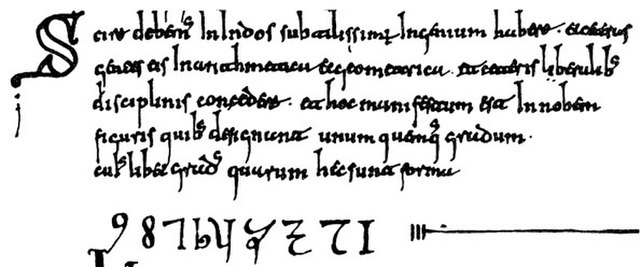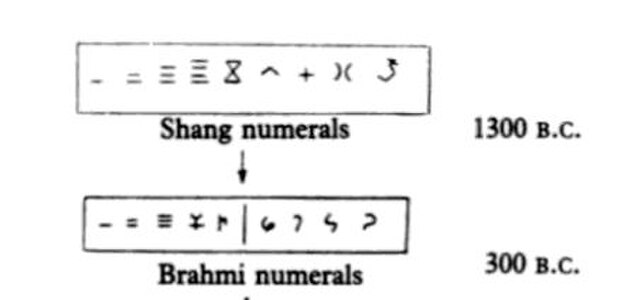Regional handwriting variation
Although people in many parts of the world share common alphabets and numeral systems, styles of handwritten letterforms vary between individuals, and sometimes also vary systematically between regions.
Cursive in Hungarian, with vowels in red (letters in blue are not used in children's education).
Upper- and lower-case handwritten cursive letters and numbers as usually taught in Italy
The ten Arabic numerals 0, 1, 2, 3, 4, 5, 6, 7, 8, and 9 are the most commonly used symbols for writing numbers. The term often also implies a positional notation using the numerals, as well as the use of a decimal base, in particular when contrasted with other systems such as Roman numerals. However, the symbols are also used to write numbers in other bases such as octal, as well as for writing non-numerical information such as trademarks or license plate identifiers.
The first Arabic numerals in the West appeared in the Codex Albeldensis in Spain.
A page of the Liber Abaci. The list on the right shows the Fibonacci sequence: 1, 2, 3, 5, 8, 13, 21, 34, 55, 89, 144, 233, 377. The 2, 8, and 9 resemble Arabic numerals more than Eastern Arabic numerals or Indian numerals
A German manuscript page teaching use of Arabic numerals (Talhoffer Thott, 1459). At this time, knowledge of the numerals was still widely seen as esoteric,[citation needed] and Talhoffer presents them with the Hebrew alphabet and astrology.
Chinese Shang dynasty oracle bone numerals of 14th century B.C.






